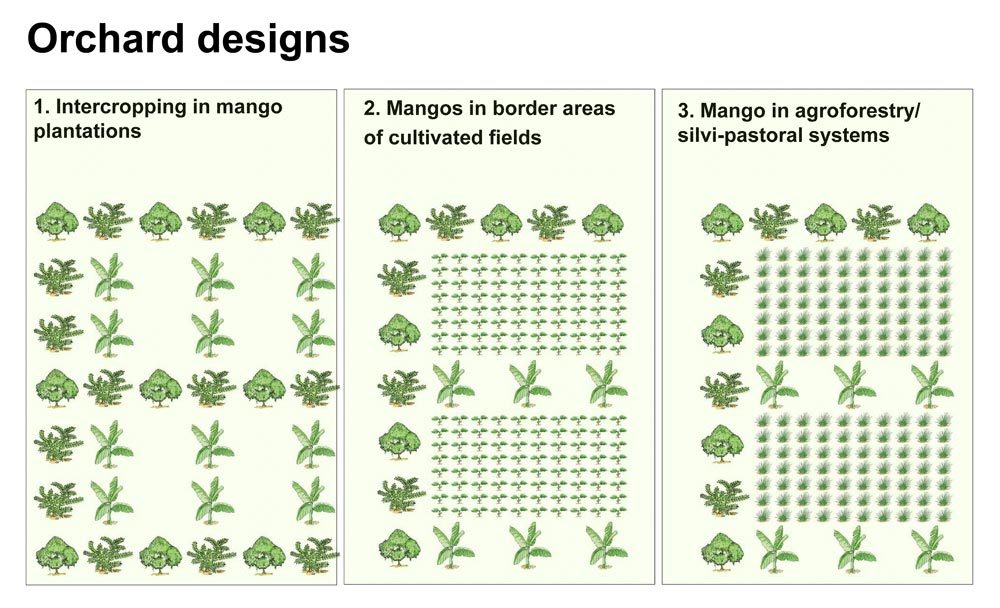Arrangement of the orchard

The method of planting (orchard design) is dependent on the field lay out. When mango is the main fruit in the orchard, a 10 m by 10 m planting distance is desirable.
Since mango trees grow slowly, they can take a relatively long period (up to 5 years) before the trees cover the space in-between. During this period, there are several possibilities to use the available space as cropping area through proper diversification. Diversification in mango production offers the following advantages:
- better use of underground and aerial space
- the yield risk due to alternate bearing can be compensated with the harvest of the companion crop, hence stable income to the farmer
- protects the soil from erosion
- improves the soil fertility, for example, when legumes are grown underneath the trees
- intercropping reduces the pest and disease pressure due to possible higher populations of beneficial organisms
- better weed management and provides space for pasture production for livestock.
Mango trees can be grown together with many other plants: as border trees on cultivated gardens, in intercropping within the gardens, in very diverse agroforestry systems or in silvi-pastoral systems (using small animals, such as sheep or goats).
Intercropping in mango plantations
If the area between the mango trees is to be used as arable land, an adequate crop rotation should be planned. During the young developing stages of the mango trees, a crop rotation with annual crops such as legume crops, vegetables, cereals and fodder crops can be grown in this case. If the local climatic and soil conditions are suitable, other fruit crops such as papaya (3 to 5 years cropping period) and pineapples (2 to 3 years) can be included in the intercropping system.
Other possibilities to enhance the diversification in mango orchards include leaving some spontaneous plant growths (bushes, flowers, etc.) on the borders or between the trees to create ecological niches.
Mango in border areas of cultivated fields
Mango trees as border trees can improve diversification on the farm, it can protect the soil and other crops against wind and it can enhance the income of the farmer.
Mango in agroforestry or silvi-pastoral systems
Mango trees in agroforestry systems can include crops such as bananas, papayas, cocoa, etc. In silvi-pastoral systems, animals can be allowed to graze on pasture growing on the mango plantation. Windbreak trees are needed because mango trees are very susceptible to wind damage. Therefore, some trees are needed to protect from strong winds on the side of the prevailing winds.
Email: Editor@agricinafrica.com

Comments
Post a Comment